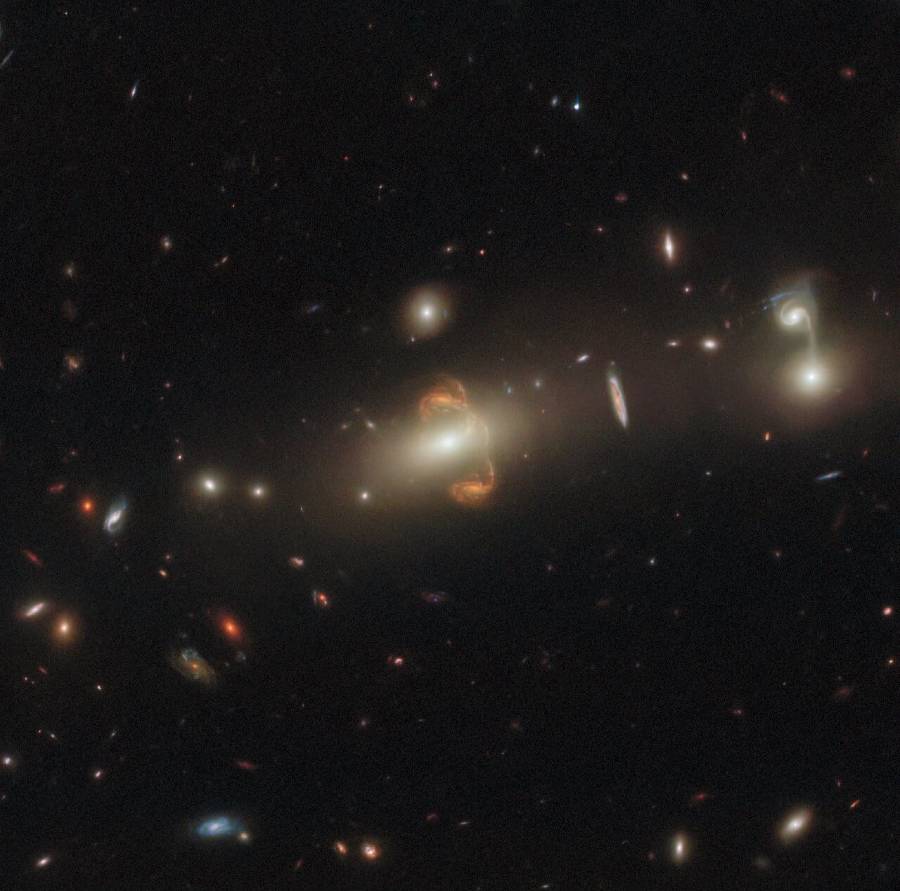This Hubble Space Telescope image has a really strange quality. If you look closely, you may see what appears to be a lengthy filament connecting two orange-colored galaxies that are virtually mirror images of one another.
It’s interesting to note that there is only one galaxy there, known as SGAS J143845+145407. Due to the way that a big object’s (or objects’, such as a cluster of galaxies’) gravity bends the space that distant light travels through, it only appears to be two.
The Gravity
Consider placing a large weight on a trampoline, with the trampoline serving as space-time and the weight as the galaxy cluster. Roll some marbles now from one trampoline side to the other. Their often “straight” routes will appear to curve in different directions, much like light rays passing through warped glass by way of space.
This peculiarity of gravity, known as gravitational lensing, can be exploited to magnify background galaxies’ light that would otherwise be too far away to be seen in great detail.
Therefore, gravitational lenses like these can be a useful tool for comprehending the far Universe.
The Observations About The Light
As seen in a recent deep field image from the James Webb Space Telescope, that light can occasionally get seriously smeared and warped. The strange, wriggling objects that resemble worms are lensed galaxies.
n Einstein Cross occurs when the lensing effect produces four pictures of a distant object arranged around the primary lensing mass.
With the extra benefit of making both photographs of the galaxy appear larger and more detailed, SGAS J143845+145407 appears at just the appropriate location behind a tiny galaxy cluster for gravitational lensing to provide two virtually perfect photos of the galaxy.
To get to us, the light from SGAS J143845+145407 traveled for approximately 6.9 billion years. That is roughly equal to the universe’s current age. The light from the cluster traveled for around 2.8 billion years.
What Is SGAS J143845+145407?

SGAS J143845+145407 is a brilliant infrared galaxy that glows relatively brightly as a result of intense star formation activity. Gravitational lenses can be extremely useful for this type of research since studying galaxies like it can aid scientists in understanding star formation and how it has evolved throughout the history of the Universe.
The distribution of star formation in SGAS J143845+145407 was recently reconstructed and studied in detail thanks to the gravitational lens.
Conclusion
They discovered that the galaxy is rather typical of its kind, and with this knowledge, they will be able to contextualize and describe other galaxies.
Hubble changed the study of lensed galaxies, and Webb is anticipated to provide considerably more information. Scientists now have a wonderful new window into the early Universe thanks to its observations, which were the first to resolve details inside lensed galaxies.
